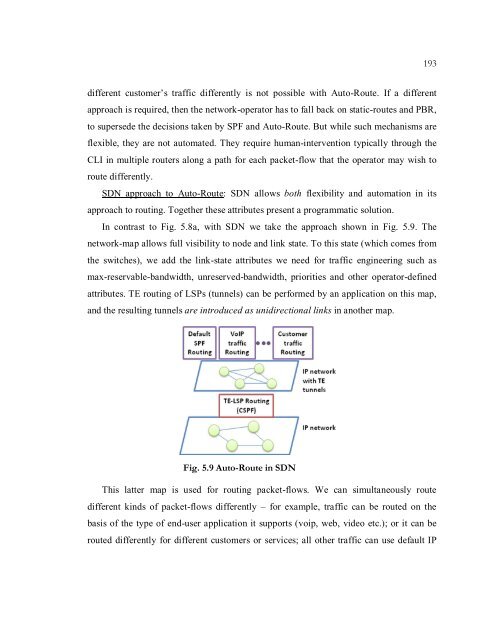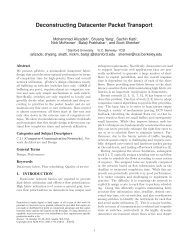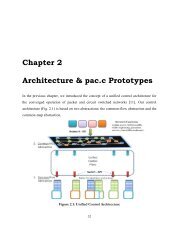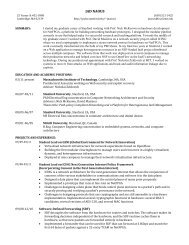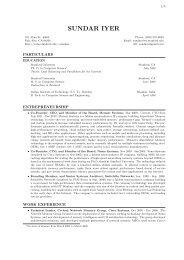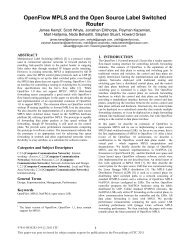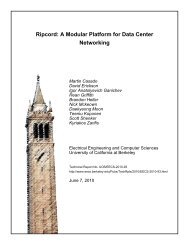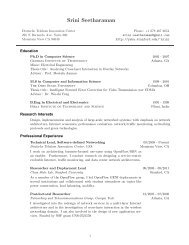Chapter 5 Introducing SDN Control in MPLS Networks - High ...
Chapter 5 Introducing SDN Control in MPLS Networks - High ...
Chapter 5 Introducing SDN Control in MPLS Networks - High ...
Create successful ePaper yourself
Turn your PDF publications into a flip-book with our unique Google optimized e-Paper software.
193different customer’s traffic differently is not possible with Auto-Route. If a differentapproach is required, then the network-operator has to fall back on static-routes and PBR,to supersede the decisions taken by SPF and Auto-Route. But while such mechanisms areflexible, they are not automated. They require human-<strong>in</strong>tervention typically through theCLI <strong>in</strong> multiple routers along a path for each packet-flow that the operator may wish toroute differently.<strong>SDN</strong> approach to Auto-Route: <strong>SDN</strong> allows both flexibility and automation <strong>in</strong> itsapproach to rout<strong>in</strong>g. Together these attributes present a programmatic solution.In contrast to Fig. 5.8a, with <strong>SDN</strong> we take the approach shown <strong>in</strong> Fig. 5.9. Thenetwork-map allows full visibility to node and l<strong>in</strong>k state. To this state (which comes fromthe switches), we add the l<strong>in</strong>k-state attributes we need for traffic eng<strong>in</strong>eer<strong>in</strong>g such asmax-reservable-bandwidth, unreserved-bandwidth, priorities and other operator-def<strong>in</strong>edattributes. TE rout<strong>in</strong>g of LSPs (tunnels) can be performed by an application on this map,and the result<strong>in</strong>g tunnels are <strong>in</strong>troduced as unidirectional l<strong>in</strong>ks <strong>in</strong> another map.Fig. 5.9 Auto-Route <strong>in</strong> <strong>SDN</strong>This latter map is used for rout<strong>in</strong>g packet-flows. We can simultaneously routedifferent k<strong>in</strong>ds of packet-flows differently – for example, traffic can be routed on thebasis of the type of end-user application it supports (voip, web, video etc.); or it can berouted differently for different customers or services; all other traffic can use default IP


